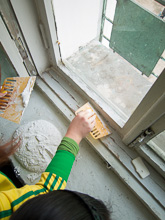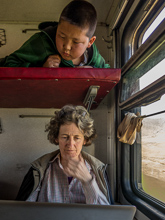Mongolia Notebooks
Articles and pictures from a year of living in Mongolia. (These notebooks are now stacked in chronological order.) Much of this material can now be read in a real book, available on-demand at Blurb. Preview Learning Mongolia.
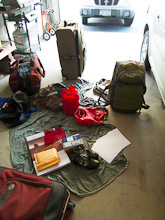
Last Minute ~ 2012-09-23
Friday afternoon, while shopping for the perfect coat for a Mongolian winter (It was still officially summer in Pittsburgh) we finally got the call. Flight plans for Monday morning. Pittsburgh to Detroit; Detroit to Seoul; Seoul to Ulanbataar. The rest will be worked out when we get there. After weeks of juggling and weighing, our next ten months of clothing and supplies are packed into two fifty, one forty-six, and one forty-two pound suitcases, as well as our two carry-ons. Neither of us are sure we have it just right, but we are ready to find out just how far off we are. There is nothing else left to do but load it into my sister Jan's car in the morning and check in at the airport. more...
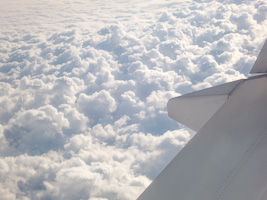
Over the Top ~ 2012-09-26
Heading over the top this afternoon—headwinds as high as 129mph. 500 miles from Detroit, heading north at 32,00 feet. With 6000 miles left on this leg of the flight, I am thinking about how unfamiliar things look already. Gone are cell phone service, text messaging, English as the primary language. At this altitude it is -46°F. The in-flight map shows that we will be skirting the edge of Hudson Bay before bending west, north of Alaska, then arcing down across Siberia to Korea. Unfortunately most of what I am looking at are clouds and a very big wing. From the look of the land below, this route leaves behind the signs of civilization that are apparent over the rest of North America.Eventually I will also be leaving behind quite a bit more. Credit cards and coffee, most of the diet I am used to. Driving to get where I want to go. more...
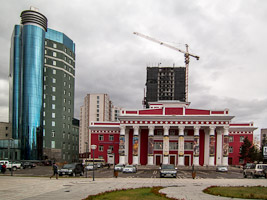
First Impressions ~ 2012-09-27
First impressions came from all directions, including my feet. Sidewalks are rough at best. (The first experience with them came trying to roll our baggage carts to our driver's car.) Broken, heaved, missing pieces of concrete are the best it is in many places. Others are just rubble. There seems to be several reasons for this, not the least the cars that drive on the sidewalks. In some places there is damage from construction. There is also just extreme wear and frost heaving. more...
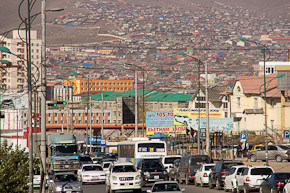
Ulaanbaatar ~ 2012-09-28
There are two flights a week going to Khovd, the last leg of our trip. One leaves on Thursday and the other on Sunday. Since we had meetings at the embassy on Thursday, we are spending several extra days seeing Ulaanbaatar, trying to fix the image of urban Mongolia in our minds before moving on to what has been described as rural even by Mongolian standards. more...
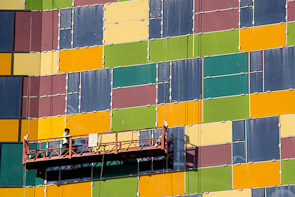
Last Day as Tourists ~ 2012-09-30
2012-09-29 ~ Walking today. Coffee with Fiona Addleton, the wife of the former ambassador to Mongolia, who gave us information on everything from what kind of Mongolian batteries last longest to the eagle festival in western Mongolia, as well as Tumen Ekh, a traditional Mongolian performance group. Crossing the square with her on the way to the Natural History Museum we came across the Royal Honor Guard, a very lucky encounter from what Fiona told us about them. We also went inside the Government House and saw a National Geographic show of its "fifty greatest photographs." The images were showing the effects of lots of exhibition time, but still remarkable. There was also a drive for new members for a Mongolian issue of National Geographic. more...
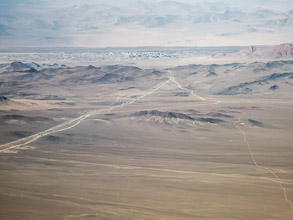
ULN to HVD ~ 2012-10-02
Clear with a good seat most of the way across Mongolia, then into some clouds and out again as we approached Khovd. Unlike the Koreans on the last flight, these Mongolians like to look out the windows—they even take pictures like I do, move from seat to seat about the cabin to chat and laugh. more...
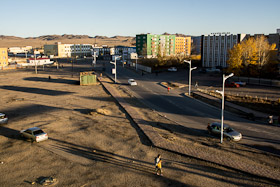
Khovd ~ 2012-10-03
Almost two days of teaching under my belt, and except for not having internet yet (clearly this has been fixed) and the not-so-minor issue of our visas (passports have been sent to Ulaanbaatar) most of what can be sorted out has been sorted out. We have set up a kitchen, navigated the big market on our own, have two keys to our apartment (after a long morning in the rain,) and Judy has a phone. We should expect to see hot water later in the month, are used to seeing cows show up around any corner, and have mastered the barest rudiments of Mongolian greetings, though it seems most Mongolians are stumped by my attempts to say "Good morning." After this morning's class, one student passed me a note with the Mongolian word for "bye" written on it, just in case I wanted to use it at the end of class. more...
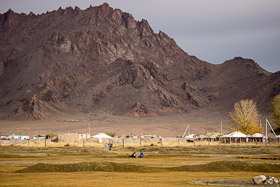
Nomadic ~ 2012-10-06
After classes today I took off by foot (I don't even have a bike now) to see the Buyant River, which Google maps had promised me I would find just west of town. I remembered a river crossing to the north-west, so headed back to the road that Judy and I walked the first evening we were here. Following it out another half mile or so, I came to the river crossing I had seen. It was, at the same time, everything and nothing like I had imagined. To begin with, the images on Google maps are more than seven years old. (This has been pointed out to me several times since I've been here.) Those images were taken in winter, and show solid ice instead of the shallow braided stream that I am looking at standing on the bridge. more...
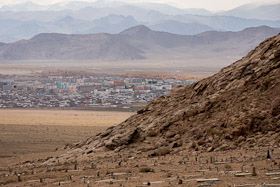
Aerial Photography, No Plane ~ 2012-10-07
Ever since flying into Khovd one week ago, I have been itching for a hike to see the area around the town, especially the steep ridges that surround the northeast and northwest corners. It's a bigger commitment than the hour or two I have had available during the week, but yesterday (Saturday) Judy and I took off to see what we could find. more...
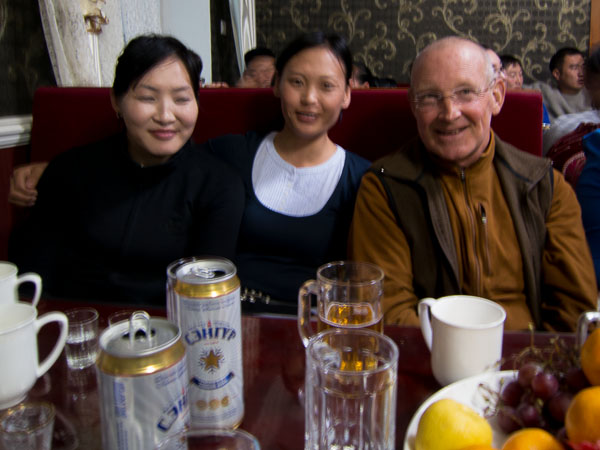
Social Network ~ 2012-10-09
We had been in Khovd for just forty-seven hours, and the first forty-five had gone pretty well. But for the previous two hours a communication error with Judy and the fact that we had only one key and one phone between us meant that I was locked out of our apartment, and rather than sit down in an unlit and unheated hallway, I stood outside in the rain, dressed in creased pants, a sports coat, and a brand new raincoat. (Although it never happened to me, I imagined myself as a little kid on the first day of school, getting lost on the way home.) As I took in all things Mongolian that walked by—people, dogs, cows—along came a woman wearing a fleece hat and a knapsack. (At least at this time of year, Mongolians do not wear hats unless they are also wearing traditional clothing... or unless it is a baseball hat.) "Hello," she said in English. "Hello," I said back, in what was becoming an an ever more foreign language. more...
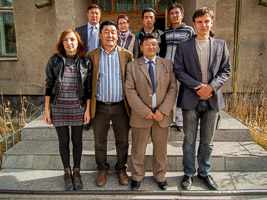
Faculty Portraits ~ 2012-10-12
Judy has headed to Ulaanbaatar for the weekend for a conference, and despite the fact that we have no passports right now, she was able to get on a plane without one. It took some preparation by university officials to get a notarized copy of the passport (which was sent to immigration in Ulaanbaator for a visa extension) as well as some personal explanations that required a trip to the airport by our supervisor, and a ride for both of them from one of our colleagues. When he came to pick her up, Davaa asked me if I'd like to ride along—something I wouldn't normally feel obliged to do. (It was my day off, I had writing and class preparations to do.) In my previous life I spent way too much time in a car, but for the past eleven days I have traveled exclusively by foot, so I was eager to go along. more...
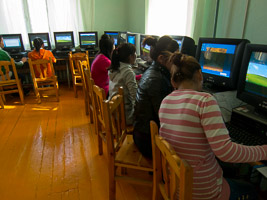
Khovd Students ~ 2012-10-14
Students here are not so different from those at home, with the exception that here they have a teacher who cannot speak their language. Khovd University serves most of western Mongolia, and although I read before I came that "Khovd is rural even by Mongolian standards," I suspect that it was not a Mongolian who was doing the writing. A look at the map will show exactly three dots the size of Khovd in all of the far west region, so by Mongolian standards, once you exclude Ulaanbaatar, Khovd is not rural but urban. more...
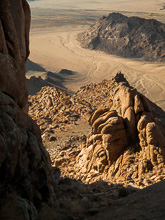
Goat Red ~ 2012-10-16
Although I have seen it named Red Goat, every one of the local people I have asked call the tall mountain to the east of town Goat Red. From town, it looks monolithic, but as you approach it, it isn't so simple. Ridges protrude in several directions, making it seem possible that “you can't get there from here” without more backtracking than I had energy for. In the end, climbing revealed the mysteries, and it was a fairly direct climb—though enough exercise to feel the next day. more...
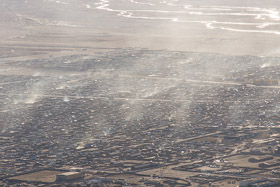
Different Expectations ~ 2012-10-18
Today was my day off, and for most of the day the residents of Khovd had no electricity or water. As winter nears ancient infrastructure is called into service and it takes time to find and fix all the problems that arise when the hot water is turned off between April and October. And as the temperature drops, the air has become toxic with the smoke from coal, cow dung, and anything else that will burn in a stove. Sidewalks, though good compared to those in Ulaanbaatar, are still not generally smooth enough for anything with small wheels, and are spotted with traps and hazards. Manhole covers go missing (I don't know how) and whether on the sidewalk or in the middle of a street, they are sometimes replaced by large pieces of concrete—and sometimes not. Stairs are irregularly spaced and of different heights, even on the same flight, and the four flights up to our apartment are unlit. Hot water may be on the left, as it is at home, but it may also be on the right, and a faucet handle that is red will not help you to know if it is hot or cold. Although the temperature has been down in the single digits (°F) and we have had snow on the ground, the university has not, until two days ago, had funding to turn on the heat. more...
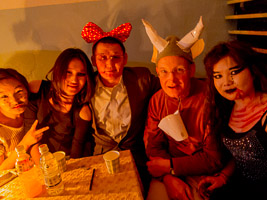
Mongolian Halloween ~ 2012-10-27
You may be surprised that we celebrated Halloween here yesterday. I certainly was when I got my invitation to the Chinese/English department's annual party. Halloween is not a holiday that is usually recognized in Mongolia, a fact that I was very conscious of as I walked across the main square in broad daylight dressed as a cow. But in the Chinese/English department, it is a way to explain a little bit of American culture to students of English. (Really, how else would you explain it?) Aside from doing a good job of dressing up like Americans, it was an opportunity to perform, as each class put on a dance or sang. In between there were competitions. Stack the nuts with a chopstick, random couples assigned an animal to imitate in the process of mate selection, and my favorite, stick the card in the watermelon. A watermelon is cut in half, each half is set on a table so that the red side faces the contestants, who flip playing cards at it in an attempt to stick them into the flesh. The team that gets all its players to stick a card first wins. more...
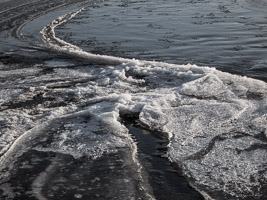
River Ice ~ 2012-10-28
The past few days it has been cold—a high around freezing, and at an elevation over 5000', dropping down into the single digits at night. Yesterday I ran south by the river and could see the explanation for the landscape that is shown in the Google maps aerial views of this area, which shows a much larger and wider area of ice than the small stream that is here. Already there are floes of ice drifting in the stream. In some places there is ice on the bottom of the river, slabs that have broken off and are pinned there by the current. Rocks, logs, old mattresses, and tires that protrude from the river are collection points for ice that accumulates as new chunks and which then catch floating chunks until small dams are formed that divert the water elsewhere. A few days ago we were here and there was no sign of the ice. Now it is something that you hear as it passes in the water, a constant tinkling sound as the floating pieces rub against other pieces of ice. It is easy to imagine what this might look like as the temperature drops, water is diverted over the banks, and larger slabs pile up. more...
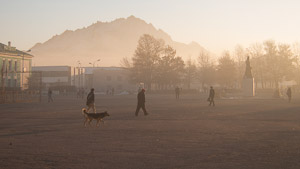
Center ~ 2012-11-01
For the past ten years I have commuted between two and five hundred miles a week to my job in Alfred, NY. So ironically, it has been a relief to find myself in Mongolia with less than a ten minute walk to work—close enough to go home for lunch or even just between classes. Most days I make the trip at least twice, and over the past couple of weeks I have made it a habit to stop at the base of a statue at the west end of the Center to take the same view of Khovd's large public square. (At first I thought my students were forgetting something when they wrote that they lived near the Center... “Of what?” I wondered.) more...
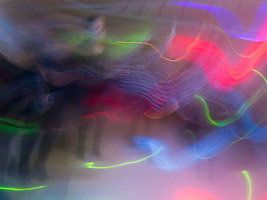
Sorry, Another Halloween ~ 2012-11-04
Two more, actually. The next was the Russian/English Halloween party, put on by students in Judy's department. The third, and I hope final celebration was with our Mongolish friends—Peace Corps volunteers and local English speaking Mongolians. Also at this party were three Russians, who serve in the Russian/English and Fine Art and Design departments. more...
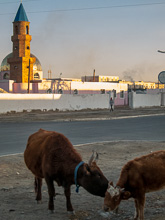
Details, By Foot ~ 2012-11-07
We've been in Mongolia for more than a month now. In that time you would think I would be able to tell you something important about this country. I have already snipped off a few little pieces to write about here, trying to give you a sense of what several interesting aspects of it are like. But the more snipping I do, the more bits and pieces I end up with that defy my ability to sort them. It turns out that saying something important about Mongolia is just as difficult as saying something important about the United States. more...
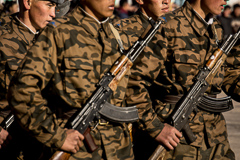
Chingas Khan's Birthday ~ 2012-11-14
Today is Chingas Khan's 850th birthday, a national holiday here in Mongolia. Schools and businesses are closed, and we have had the day off. I used the morning to catch up on some grading and had planned to work on another notebook in the afternoon. But on my way to the square to get my daily photos I was met by a large celebration. It took a while before I ran into some people I know who could explain that on this day every year new recruits are inducted into the army. Although it is a peaceful country now, celebrating the renewal of the present Mongolian army on the great conqueror's birthday provides a reminder that this was not always the case. more...
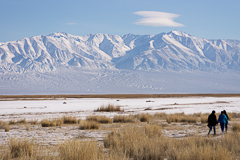
Har Us Noor ~ 2012-11-16
Until a few days ago I had not been any farther from the Center than what I could run or walk in the part of an afternoon that I could sneak away from work—the top of Goat Red, a few miles south on the river, or six kilometers east (and uphill) on the road that goes all the way to Ulaanbaator. So it was a treat for us that five of my third year students organized a trip to the nearest national park. Har Us Noor (Black Water Lake) lies a forty minute drive east from downtown Khovd, over an unmarked dirt track. The road is paved until the pass, after which it drops off toward the lake and across land that I could be fooled into believing is Utah or Arizona—although it is higher and drier. more...
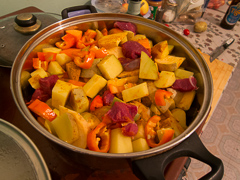
One Dish Meal ~ 2012-11-18
Some of you have been asking us about food (here it is Paige) in Mongolia. Although the choices are not as varied as they are in the United States, this note should help convince you that we are not wasting away. Along with a new currency and the need to use higher math for even simple transactions (all vendors use calculators to calculate prices—more than a thousand tugrugs for a small bag of potatoes) comes a simplified shopping list. At the big market there are a couple dozen vegetable vendors who have finally moved from outdoor stands to a large one-room building. They all sell exactly the same thing, and when I enter the door at one end they are all hoping I will choose their vegetables over their neighbors', making for a lot of guilt (mine) and disappointment (theirs.) At this time of year their list of offerings is short: carrots, cabbage, turnips, potatoes, and onions of several varieties. They also have garlic, and a few remaining beets. There are even a few watermelons, but our last one was not so good, so we are done with them for this year. Until a week ago there were still local tomatoes, pale and ripened in the dark, but quite tasty compared to hothouse tomatoes from home. At the pink market we find Chinese cherry tomatoes, peppers and cucumbers, along with some imported fruit. And today, at the stand of the woman who has helped me through my weeks of ignorance about Mongolian money and numbers, we found two large pumpkins for the Russian/English department pumpkin pies that Judy volunteered to make. more...
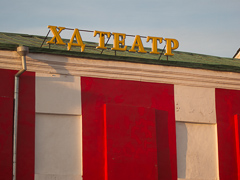
Transliteration ~ 2012-11-21
A little research has brought me to the interesting fact that more than 97% of Mongolians over the age of fifteen are considered to be literate. It's a surprising number when you think about it. (You might also find it surprising that the United States is one of forty-six countries with a published literacy rate of more than 99%.) Fortunately we were not included in this survey, since for all practical purposes we would be among the 2.1% of females and 3.1% of males in Mongolia who cannot read and write. Although we do fine in our own language, we are among that group of people in any society that cannot function in the local language. In our case our “illiteracy” goes far beyond our inability to read and write, to include language that is spoken. more...
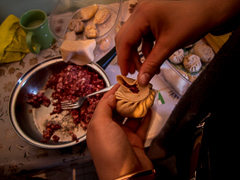
Бууз · (Buuz) ~ 2012-11-24
Yesterday Altantsatsral and Gulnar came to our house to teach us how to make buuz, Mongolia's version of a meat-filled dumpling and one of its traditional foods. In the course of the afternoon we went to places in the market I had not yet seen. We needed to buy ground sheep meat, (mutton, not lamb) the fermented milk ingredient to make aarts, (a hot drink that is sour and has flour in it,) and seasoning for the buutz. It's not clear what our next attempt at making buutz will be like, but even in our sparsely equipped kitchen theirs were nearly perfect, executed in two different styles. One was the Mongolian style, which ends up like a pinwheel. The other was in the Khazak style, folded like a calzone and pinched in a very stylized way. Although mine were pathetic in comparison, they all tasted like they would keep a person warm in a Mongolian blizzard. The kilogram of mutton contains plenty of fat, and it is wrapped in dough made with another kilo of flour. The finished dumplings are then steamed. Although the four of us put a pretty good dent in the batch we made, there are still leftovers in the refrigerator, even after an early lunch today. more...
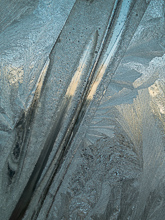
Frost ~ 2012-12-02
Among the things that are predictable here is the temperature. Today, the second day of December, our predicted high is -11°C. It has been at least two weeks since it has been above freezing, and at night we have had lows down to -21°C or -6°F. As a comparison, my sister Jan told me yesterday that she was looking forward to a bike ride in 60° weather in central Ohio. Unlike Mongoiia, she is not getting her weather from Siberia. more...
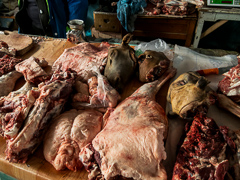
Mortality Lesson ~ 2012-12-06
A few weeks ago I asked a student about some animal droppings that were scattered on the ground as we walked. Without hesitation she bent over and picked up a few samples in her bare hand, examined them closely, and then tossed them back on the ground. "Goat probably, or maybe sheep." Although it was not an authoritative answer, it was an authoritative response that came with a familiarity and comfort with the subject that we in the United States would find foreign. Here in Mongolia animal dung is used for both home heating and insulation, so handling it seems just as natural as it is unnatural for us. more...
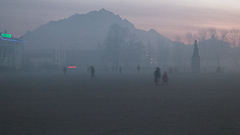
Here's a first look at the activity in Khovd's Square as it unfolds in one month of time lapse photography. I have mixed it with sound that is captured from different places within the frame that you see here, though I have also included the sound of a throat singer from video I captured at another celebration. There is a long bleak winter ahead, but my goal is to keep this up until the leaves turn green. more...
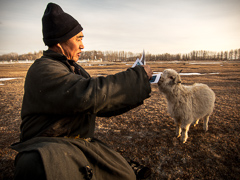
Communication, Basics ~ 2012-12-20
Two weeks ago I was hiking up the river to see how far I could get before dark. The sun now sets at around 4:30, but it doesn't get really dark until after 6. So I can still get four hours of hiking in if I can pry myself away from work by 2. My original goal was to get to the place where the Buyant River turns straight north from its northeast course, out of the mountains to the southwest. I wanted to look up that hidden valley, around the sharp nose the river makes coming from its source. On that afternoon, I didn't quite get there. more...
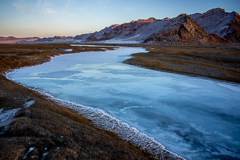
River Stopping ~ 2012-12-23
The Buyant River is spilling out of its banks now. The water is freezing into chunks that collect, dam up, and divert the flow over ground that is nearly flat. Although I am within walking distance of the same latitude as Emerson Orchard on Flathead Lake, the weather here comes from Siberia and not the Pacific Ocean, and we are at twice the altitude. During the long nights the temperature has been dropping to -10, -20, and a few nights ago, nearly -30°F. The feeble sun has been bringing the thermometer back above 0°F in the daytime, but not by more than a digit. The water that flows over this ground does not stay liquid for long. Low ground fills with ice, frozen from the surface all the way to the grass or gravel below. Shallow washes created by floods become main arteries as the primary flow is re-routed. They, in turn, ice over, solidify, and divert the water to the next lowest ground. One month ago I could run along the main bank of the river, but now I cannot even find it. On my way out of town to the west, the branch of the river spanned by the bridge is completely dry, reappearing mysteriously a half mile further downstream. more...
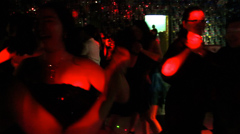
I asked for a translation for the Mongolian name of this song, Уран Хас, (sounds like Oran Hoss) which I have heard many times since I've been here. The answer I got (artistic swastika) was not convincing enough that I thought I had it right, though I was persuaded, despite the uncertainty of its title, that it is a song about love. So I'm still asking around. While I am looking, I am just calling it A Mongolian Waltz. Here it is, set to dance. I asked where Mongolians learned to dance so well, and was told that they learn in secondary school. more...
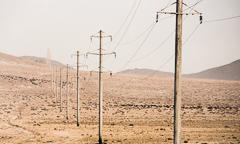
Communication, Systems ~ 2013-01-07
Internet
You're reading these notes because even here in the least densely populated country in the world, we have an internet connection. We are hooked up to a little device the size of a flattened stick of chapstick that plugs into the usb port of our laptops. If we are not using our built-in wireless modems for something else, such as transferring files (Apple Airdrop) or printing through an Airport, Judy and I can share the connection this device provides between our two computers. It is not without its problems. Here in western Mongolia, SkyTel was recommended to us, and as things in this part of the world go, it has been pretty reliable. We pay 24,000 ₮, or a little over $17 for "five gigas" of transfer, which, with updating this site, downloading teaching material, checking in on family at home with Skype, and getting software updates (a recent OS10 update was just shy of one "giga") lasts about two weeks. If it runs out on a Saturday morning, we can buy more gigas before noon by walking a few blocks and paying cash, but if it runs out on Saturday afternoon, we are out of luck. There are also outages, for as long as a few hours or days at a time, when there is simply no contact with the outside world.
more...
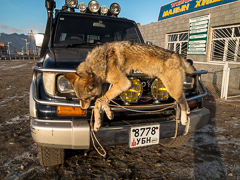
Canis lupus lupus ~ 2013-01-09
In November I asked some of my students to tell me about this picture. It was the first wolf I had seen here. The explanations they gave convinced me that Mongolians have an even more complicated relationship with Canis lupus lupus than we do in the United States. more...
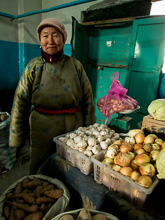
The Market ~ 2013-01-10
Here is a first installment on the hub of Khovd's economy, one fenced city block bounded by two east-west and two north-south roads, just less than a quarter mile on a side. Although I've heard it called several names, including the Black Market and the Big Market, most people here just call it the market. It's where people here find most of what they need, from keys to cars and cabbage to coal. On this quick tour my goal is show you that The Market here comes much closer to being a commodities market rather than a super market or shopping mall. Although there are many vendors, there is not a very big distinction between one and another, and yet a few, through a slightly different product line or better presentation, get to claim us as repeat customers. Some have bigger carrots than others, some have firmer turnips. But is is also true that some are much more friendly to us, and make it easier for us to buy from them. more...
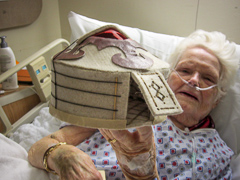
I made a trip home in January to visit my mother. It was supposed to be a couple of weeks to visit between teaching semesters here, at a time when she was about to start treatments for a health problem that was discovered the month before. Although her doctors were optimistic, nothing is ever easy once you get to be eighty-nine years old. A week after I arrived she took a turn, and one problem led to another. She died on February 2. more...
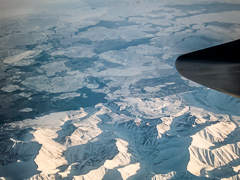
PIT > SFO, SFO > PEK ~ 2013-03-02
On my way to the US, my flight from Seoul left at dusk, and heading east, it was dark within minutes, so failing to get a window seat was not a serious disappointment. I had a good seat booked from San Francisco, but missed my plane while I was sitting at the gate. I re-booked for the next day, but that flight was delayed and again did not leave till dusk. So except for some time over Mongolia, it was not until my return trip that I found a good enough view to use a camera. more...
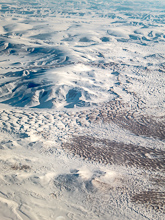
Over Mongolia ~ 2013-03-04
Unlike that of the United States or China, the view of Mongolia from the air is not one whose concern is of land use by humans. Although Mongolia is less than a quarter the size, its 2.8 million population is less than one percent that of the United States—making its population density the second lowest of any country on earth. (It has only recently given up the lowest position to Greenland.)
Start in the middle of Ulaanbaator, its largest city, and walk in any direction for an hour and you will be at the outside edge of town.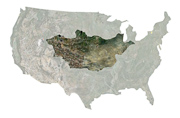 Do the same from Khovd and in most directions, if you had brought a tent and some water and the weather did not discourage you, you could spend the night without anyone noticing. more...
Do the same from Khovd and in most directions, if you had brought a tent and some water and the weather did not discourage you, you could spend the night without anyone noticing. more...
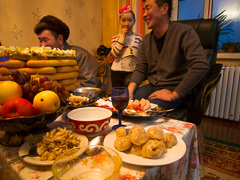
Tsagaan Sar ~ 2013-03-05
This year Tsagaan Sar, literally White Month, began on February 12—as always, the first day of a new moon. Comparable to our Christmas and New Year combined, it's a time at the end of the harshest part of winter where families and friends come together to pay respects and wish each other well. That really doesn't begin to explain it though. more...
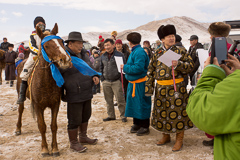
Racing Horses ~ 2013-03-10
Of the five snouts that contribute to Mongolia's diet, the one that plays the biggest role in its identity and culture is the horse. Mongolia owes much of its history to the horse's partnership in carrying Mongolians to victory over their neighbors. That partnership continues, from late February through the summer, as the the racing season begins. more...
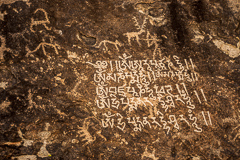
Petroglyphs ~ 2013-03-14
Although its view is blocked by another building, five miles south of our apartment is a double peak that stands in the middle of a vast flood plain. Its straight sides emerge from the sand and gravel just south of Khovd's airport, and on the north face an emblem of Mongolia has been build out of rocks that have been painted white. Around the south edge of this pyramid, starting right at ground level, is a collection of hundreds of petroglyphs, chipped into the desert varnish of the rock. Most of these drawings depict goats and other fantastic horn-bearing animals. Occasionally there is what could be seen as a wolf or a dog. There are people on horses, sometimes hunting with a bow, and once in a while, a bird. more...
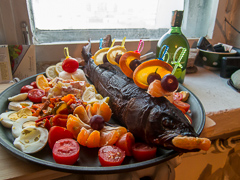
Forgive me for missing my chance to report on Women's Day, only a brief week and a half ago. Women's Day was a legal holiday, and not only was school closed, but so were most stores and other businesses. So if you spent Thursday afternoon helping to shop for the pre-women's day celebration for teachers at school, (as I did,) you would be surprised by the need to serve leftovers (practically all food stalls at the market are, well, manned by women) to the honored woman of your life the next day, unless you were fortunate enough to get an invitation to dinner somewhere else, as we did. more...
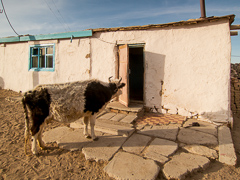
Cows ~ 2013-03-24
I have never lived in a place where livestock freely roam the city streets, so it took a little while to adjust to the fact that at any time of the day or night, practically anywhere you go, it is possible to run into cattle who want to share the sidewalk or road or path with you. Once the initial novelty of it passed, a few other insights have set in, some that have broken previous preconceptions about these animals. more...
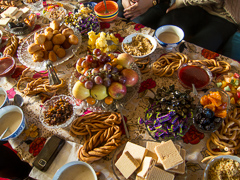
Nauriz ~ 2013-03-28
Imagine Thanksgiving lasting for three days. Add the suggestion that you eat at many different homes during that time, and the requirement to cook for visitors who are all trying to do the same thing, during the times they are not eating. This pretty much describes the complicated logistical and social side of Nauriz, the Muslim holiday that marks the beginning of Spring. It is celebrated in Khovd by the many Khazaks who live here and work and go to classes side by side with Mongolians. Unlike Tsagaan Sar, it is not a national holiday, but for Khazaks that doesn't matter. There is too much preparation to do and too many homes to visit, so many take the day off anyway. more...
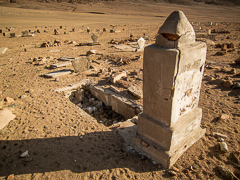
Khazak Cemetery ~ 2013-03-29
Last week I hiked to the southwest notch on Goat Red, then on Sunday to the Khazak cemetery that we can see at the top of the draw out our kitchen window. We have hiked through it once before, but today, accidentally, it became my destination. I was running and walking up the dirt road that passes first a dump and then the lower Khazak cemetery. I thought I was going for the exercise and was unprepared for what I saw. more...

Getting To Zavkhan ~ 2013-04-10
Except for on three occasions in the past seven months, I have only been as far from Khovd as I can walk in an afternoon. So I was excited about an invitation to go with a team of our teachers to Uuliastai in Zavkhan Aimag to give some workshops for secondary school teachers there. It was a chance to learn a little more about Mongolia. As always, I learned more than I expected. more...
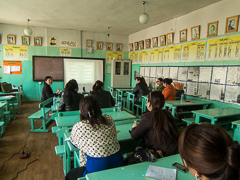
Uuliastai Workshops ~ 2013-04-11
Our mission in Uuliastai was to hold a series of seminars for teachers in secondary and primary schools in the region. The trip was planned to coincide with the Olympics, Mongolia's nation-wide academic competition. Each aimag center hosts contestants from surrounding suums for events that last several days. Because of the difficulty of travel, many from surrounding areas stay for the week, making it a good time to convince them to come in for some professional development. more...
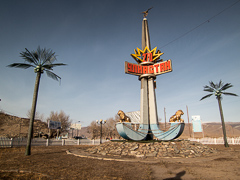
Uuliastai ~ 2013-04-18
There is no way to tell you about Uuliastai except to show it to you, so this is a long notebook with a short introduction. Located between mountains at the confluence of two rivers, Uuliastai has the feel of a much larger, older city than Khovd. Even though it has lots of abandoned factories at the southern edge of town, it still seems vibrant and colorful. more...
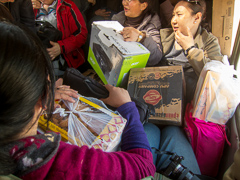
The Mongolian Goodbye ~ 2013-04-28
After four days of living in a high school dorm I was looking forward to the trip home on Friday. It seemed like a simple matter of packing a few bags and gathering the various teachers together to convince them to get into the van. I imagined that this might take an hour, maybe two. I did't imagine that getting ready for a six hour trip might take nine hours. Or that a twelve hour trip the next day might not start until well into the afternoon. That shortness of imagination comes from not being a Mongolian. more...
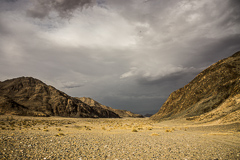
Spring Landscape ~ 2013-05-07
Although it is snowing on and off today in the mountains around Khovd, spring has taken over in this part of Mongolia. Because we've been so busy, it feels like it has come all at once, but the transition has been as long and gradual as I have ever known it. The first signs came back in February when suddenly one week, when the sun was noticably higher and the days noticably longer, the ice stopped accumulating between the branches of the Buyant. For a while it just stabilized, and then it began to recede, leaving pockets of ice that melted, then pockets of water that drained. A few days ago I could still see a large patch of ice southwest of town near the nose where the Buyant heads west and up, but even that ice is nearly gone. more...
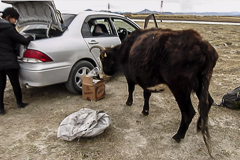
Picnic ~ 2013-05-08
I started to hear the word "picnic" used in conversations with my students by late October. At the time, I wondered what they could possibly be talking about. The river was starting to freeze, all signs of green had been gone since before we arrived in September, and the sun was getting ominously low in the sky. Surely "picnic" has a different meaning here. more...
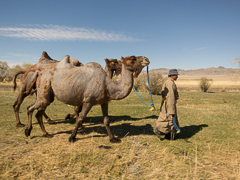
Field Trips ~ 2013-05-12
After a long winter of short walks, spring has brought us out for some longer trips. Starting in March the weather was good enough to climb around on our local mountains again, and as I've already noted, go for some picnics. This notebook is about two day-long outings we made in May. I'll keep the intro short because there are a lot of pictures. more...
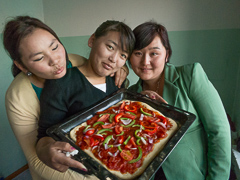
Pizza In Mongolia ~ 2013-05-15
Over the past month Judy and I have been working on having all of our students over for dinner. Given our limited cooking, seating, and eating facilities, and in the interest of introducing our Mongolian students to something new, we have been teaching them how to make pizza. It is not a skill that I am an expert in, but it is one that, with a dozen hungry students due to arrive any minute, I have been able to pick up on quickly. (Two bags of flour, a little pile of salt in the palm; water, sugar to proof, and yeast.) I hope that much sounds at least a little familiar to real pizza makers, Jo. The rest is as close as we could get—sauce from whatever we can find with sauteed onions and garlic and dried oregano; onions, peppers, cherry tomatoes, sausage of some sort or another, and cheese, sometimes in pre wrapped slices, sometimes smoked in a log.(It's the best we could do since the Mongolian cheese we've tried doesn't melt.) more...
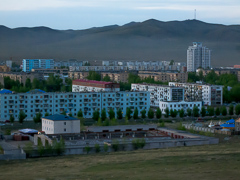
From the USSR ~ 2013-05-23
Somewhere in Moscow, an architect is smiling at this picture from his grave. This, the southern and newer part of Darkhan, does not look this good often any more. But in the soft evening light everything looks orderly, the hard edges come off, and you can look at it as it may have been first imagined over fifty years ago. more...
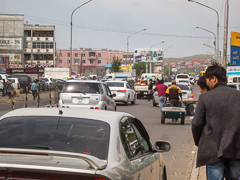
Modern Darkhan ~ 2013-05-25
Twenty years after the Soviets left, Darkhan is making its way on its own. There is construction everywhere, but mostly in the southern newer section and in the thin area between the new and old. Religion, which was discouraged for seventy five years, is making a comeback. And although the old public market seems to be very busy, so do several small shopping centers, where many vendors have small shops or businesses. There are even a few mega-stores, similar to our Best Buys and Targets—BSD Electronics and Nomins. The offerings are similar to what can be found in the US, though the choices are more limited and the prices for higher-end electronics are very high, most likely because there is little competition. (The prices for software are very low—19,000₮ or about $13.50 for a full version of Photoshop or InDesign. That is another story though.) more...
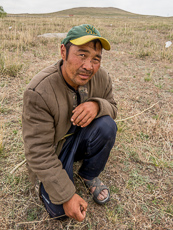
Close ~ 2013-05-27
Despite all that is going on above ground level, I am still finding a lot to look at from my hands and knees. As always, what I find there is so engrossing that time can pass by without me noticing. And so it was that I was startled one morning by a nearby snort of a cow who, with her buddies, had walked up on me when I was photographing. I already knew what was next and turned to meet this herder, with a puzzled look on his face. It was not a look that said, "Wow, that looks really interesting." I showed him what I was looking at, and at some of the images—purple and yellow native irises as well as a yellow wild poppy. I also explained that I was from the place that the logo on his baseball hat was from, and asked if I could take a picture of him. more...
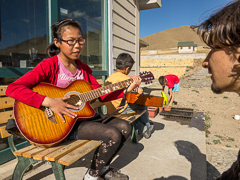
Lotus Guest House ~ 2013-05-28
On our way back from Darkhan on Friday we stayed at the Lotus Guest House while waiting in Ulaanbaatar for our Monday flight. It's a cozy place with an interesting history and purpose. It's a fund-raising business for a much larger operation—three orphanages for children from Ulaanbaatar. more...
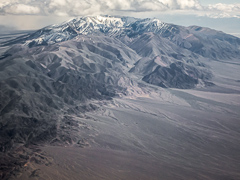
Jargalant ~ 2013-06-01
Hovering above Har Us Noor is a long stretch of mountain called Jargalant. When traveling east from Khovd it is the most prominent mass to the north for nearly three hours. From the air it is a long ridge that is banked on both sides in sand, the weathering away of a much higher peak in the past. Like other mountains in Mongolia, it is an uplifting of many different sediment layers, which erode into washes of sand the color of their source rock. So in addition to the knowledge that there are fifteen snow leopards living there, there is the visual treat of looking at how the different colors of sand and rock play out against one another. more...
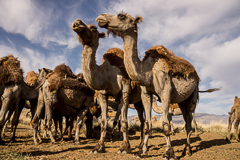
Raising Camels ~ 2013-06-04
Another field trip last weekend, this time to Зэрэг баг, (Zereg Bog) a sparse collection of gers spread out along the flat area beneath the southern edge of Jargalant Mountain. We went with Davaa, the woman who works at the herder shop near our apartment where Judy bought her deel. Davaa's family has livestock there. One branch of the family has 2500 head of various members of the Mongoian five snouts: cows, horses, goats, sheep, and camels. Davaa's branch of the family has fewer animals, but among them are sixty camels that we could see, which they kept close to their ger. Thirty were adult females, and another thirty were their young offspring. Males are kept somewhere near the higher elevations of Jargalant. more...
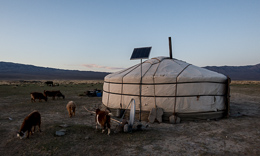
Davaa's Countryside ~ 2013-06-10
There is a place in Mongolia which, translated into English, is called The Countryside, a phrase that is usually used without any other modifiers. It is the heart and soul of Mongolia, and is where most people, even if they don't actually live there, have their roots. They grew up in The Countryside. Their parents or relatives live in The Countryside. They visit The Countryside when they are visiting relatives, or on the weekend, or over the summer. Aside from the fact that many, many Mongolians are herders, living away from the city is often the preferred way of life. more...
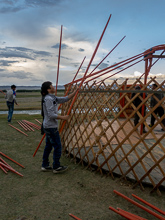
City Ger ~ 2013-06-13
We have been waiting for the opportunity to see a ger put up since we got to Mongolia, so it was a relief, finally, when our neighbor invited us to go with them when they were ready to take their ger to the river. Like many people in Khovd, no matter where they live, they move to the river for the summer. Some go to let their animals graze on the lush grass that grows there, but many just go because it is cooler, and because it's an easy way to feel like you are living in the countryside, even when you are ten minutes from town. more...
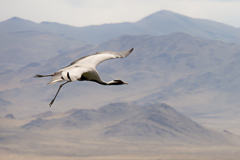
Up The Buyant ~ 2013-06-15
On our last weekend here in Khovd, Judy and I went for a hike to what I have been calling the nose at southern end of what we can see of the Buyant River. I have tried on several occasions to get down there to peek around the corner, but have always run out of time or energy before getting there. This time, we took our tent and sleeping bags so we could walk as far as we wanted without the need to make it home. more...
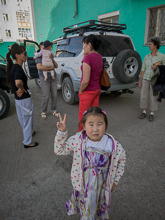
Leaving Khovd ~ 2013-06-16
Living in any place for the better part of a year will cause you to form an attachment to the land and people you are surrounded by, and Khovd, for us, has been no exception. The last few weeks have been spent trying to fix in our minds the people and places that have had such a strong effect on us. There is never enough time to get done what you'd like, or to see all the people you want to see. We will each miss several dozen colleagues and our fifty or so students. I will miss the ability to walk out the door and climb a mountain or look for petroglyphs or feed cows. I will also miss a kind of simplified life that will get increasingly complicated over the next few weeks. And I'll miss the fact that in Mongolia, something surprising is always about to happen. more...
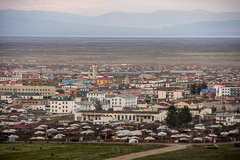
Ulaangom ~ 2013-06-18
Ulaangom sits near Mongolia's largest lake, in the northwest corner of the country. The surrounding ground is table-flat, barely sloping from the lake a few miles away to the mountains to the south and west. Although it had more of them at one time, it has practically no trees now. On the road to Red Mountain there are stumps, signs of the possibility of trees. We heard a story of a Russian military leader who was camped in the forest that once occupied the flat green plain below the mountain. When someone fired a shot and he couldn't discover the source, he had his men cut down every last tree to prevent such a thing from happening again. more...
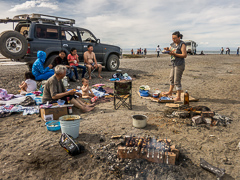
Swimming, Barbecue, Russia ~ 2013-06-20
On Wednesday morning I went to the market with Tsagaana to buy some meat and other ingredients for a picnic at Uvs Noor. We had two Land Cruisers of relatives who would go, and the main course would be barbecued mutton. There would be a salad too, and after a phone call from her brother-in-law requesting a chunk of the meat we bought at the market, I learned that I was participating in a barbecue competition. Suree, Tsagaana's brother-in-law, would prepare his version, and I would prepare mine, with the ingredients I could find at the market. While I had a reputation to defend, I didn't really know too much about my competition. I shuttered at the fact that he had many serious metal skewers, and that Suree looked like he had eaten a lot of barbecued mutton. So I did my best and invented a Mongolian marinade that started with garlic and Russian ketchup, and ended with sea buckthorn juice. more...
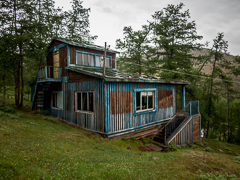
Camp ~ 2013-06-22
Kath Anderson once wrote a poem that begins, "Camp needs no more space than two sleeping bags and a backpack stove." I'm sorry, but I can't remember right now how the rest goes, but I do remember that the idea behind it is that camp can be simple, just a place to sleep while you are busy conducting the much more important business of traveling. And so, when we were dropped off at a resort partway up the mountain south of Ulaangom, I had to catch my breath to let my eyes catch up to my expectations. The camp on Han Hoiyin Uul was described as a place of incredible beauty. The mountain valley where the camp sits is in fact very beautiful, but the resort itself has seen better days. Approaching from below, our first glimpse was of the roof that had been peeled off of the dining hall by wind. In the rain that we had the next day it was hard to find a table that was not wet, the drips spreading out along the ceiling much farther than the actual hole in the roof. more...
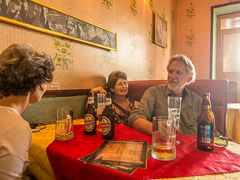
Mongolian Tourists ~ 2013-06-29
Once we left Khovd our role in Mongolia changed—from being employed and working for a university to being unemployed and traveling as tourists. Judy's sister Nancy and her husband Steve were coming to Ulaanbaatar for their vacation and we would join them for all but the last week of our stay here. For a couple of days we showed them the sights in Mongolia's capital, and they put up with us as we shuffled belongings from guest house to a friend's apartment, trying to anticipate and pack what we would need for trips to places we've never seen. Our goal was to see some country that there was no time to see when we were teaching five days a week, places we had heard about but never visited. And part of that strategy was to get out of Mongolia the day before our work visas expired so that we could re-enter as tourists, with an extra thirty days to see Naadam. The catch was that we had to go to China, and not by just walking across the border and back. (We opted out of the hitch-hiking option.) more...
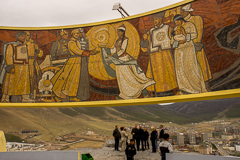
Zaisan, Buddha, Customized History ~ 2013-07-09
Just south of central Ulaanbaatar, across the Tuul River, is a memorial to Mongolian and Russian soldiers who were killed while cooperating in WWII. It sits on an important point of rock that was once a much more impressive monument than it is today. When we arrived in Mongolia, an embassy driver passed by this spot as a shortcut from the airport. Then you could see the entire six hundred steps that led from the street to the memorial. From the top you can still get an almost uninterrupted view of the city, but it may not last long. Beneath the memorial, nestled in the arch of the long stairway to the top, is a new luxury apartment building that has not yet reached its final height. Already it blocks the memorial from the street below so that on the same drive today, you would not even be aware of this memorial's existence. more...
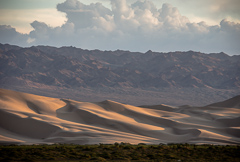
The Gov ~ 2013-07-15
My anticipation of our tour to the Гов was flavored by by everything I thought I knew about it—from the reading I've done, but also from the pictures I've seen. You have seen the same pictures, and so you have the same impression I did. Sand dunes, camels, heat waves shimmering on the horizon creating patches of large and temporary lakes that disappear when you approach. So let me tell you a secret about what we call the Gobi Desert and what Mongolians just call the Gov. (It rhymes with rove.) Most of it looks like the rest of Mongolia, but bigger—sandy, gravelly, or rocky soil, distressed uplifts of solidified sediment, eroded silt from a long ago lake bottom, and sparse vegetation of grass and sage-like plants which, at this time of year, give the land a pale green haze. more...
